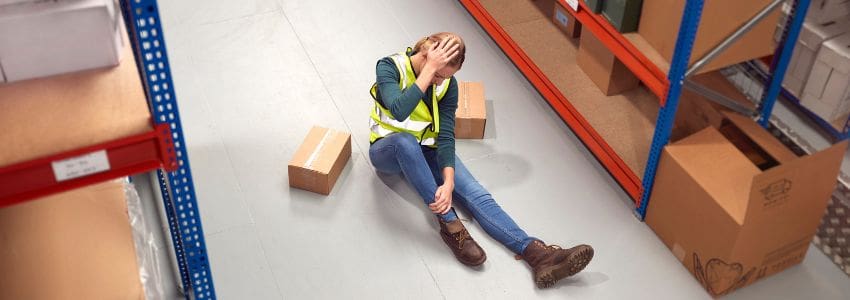How To Conduct a Workplace Accident Investigation
Last Updated on March 26, 2024 / Health, Safety & Security, HR Compliance

HR Question:
We had a recent “close call” that nearly resulted in an injury at work. This made us realize we don’t have a well-defined plan for how to conduct a workplace accident investigation. Can you walk us through a good incident investigation plan?
HR Answer:
Despite the best efforts to maintain a safe work environment, workplace accidents still happen. The Bureau of Labor Statistics reports that there were 2.8 million nonfatal injuries and illnesses that caused a private industry worker to miss at least one day of work in 2022 – that’s up 7.5% from the previous year. With the continued increase of accidents happening at work, there is a good chance that you will need to respond to a workplace incident at some point in your career. Here are some tips on how to prepare for and conduct accident investigations.
How To Conduct an Accident Investigation
Accident investigations help employers keep employees safe by identifying hazards that may have caused injury. Investigations can also shed light on potential gaps or opportunities for improvement in an organization’s safety and health protocols. The Occupational Safety and Health Administration (OSHA) strongly encourages employers to not only investigate accidents but also close calls or “near misses” that could have resulted in injury.
When an accident happens, the first priority is to assess any injuries to determine if emergency care is required. Always call 911 for life-threatening emergencies. Then, you can consult your Emergency Preparedness Plan for details on how to handle workplace emergencies. Be sure to follow the proper procedures for workers’ compensation claims and ensure you are aware of where to send an employee depending on the severity of their injury.
Once the injured employee is attended to, it will be important to understand the circumstances that led to the injury and gather any related evidence. Oftentimes, a supervisor will lead the investigation. It is recommended to approach the situation with a focus on learning what happened and identifying potential changes rather than placing blame. A best practice is to include managers and employees in the investigation process as they can bring different perspectives and insights as you explore the best way(s) to avoid future injuries.
OSHA provides detailed guidance and recommendations in its Accident Investigation Guide to help employers develop consistent investigation procedures. This guide outlines a four-step approach to conducting incident investigations and includes helpful tools (i.e., sample Incident Investigation Form, checklists, etc.).
Workplace Accident Policies and Procedures
While it’s not possible to stop all accidents from happening, preparation is key to being ready to respond quickly when an accident happens. A workplace accident policy and procedure is a tool that can provide guidance and training on the organization’s processes for evaluating accidents.
The accident investigation policy identifies who is responsible for investigating accidents – this could be an individual or group of employees acting as an Accident Investigation Team. The team should be trained to react swiftly to preserve the accident scene, collect evidence, and gather photos and witness statements. Using an Accident Investigation Form can provide a checklist to ensure all the facts are documented in a clear and consistent manner.
If you, like many employers, have employees who work from remote locations, it will be important to include remote employees in your policy and procedure as accidents still occur at home offices. On that note, you will also want to understand how to determine if a home office injury is covered by workers’ compensation.
Root Cause Analysis
Once all the details are collected, investigators should conduct a root cause analysis to determine the primary causes and contributing factors that led to the accident. The purpose of the root cause analysis is to determine the underlying or systemic causes rather than the immediate cause of the accident.
For example, if a safety rule was not followed, why was it not followed? Taking a deeper dive into the why may uncover weaknesses in safety protocols, equipment, or training. This will allow investigators to make recommendations on corrective actions designed to prevent similar accidents in the future.
With the right accident policy and procedure in place, employers will learn valuable lessons from any accidents and build a safety-first culture.
Thank you to Colleen Mahoney, PHR, HR Business Advisor, for contributing to this HR Question of the Week.
Clark Schaefer Strategic HR understands your concerns with the well-being of your employees as well as your organization. We offer expertise in health, safety, and security to cover any need you may have ranging from creating workplace safety policies to developing a business resumption plan for handling unexpected emergencies. Visit our Health, Safety & Security page for more information, or contact us.




